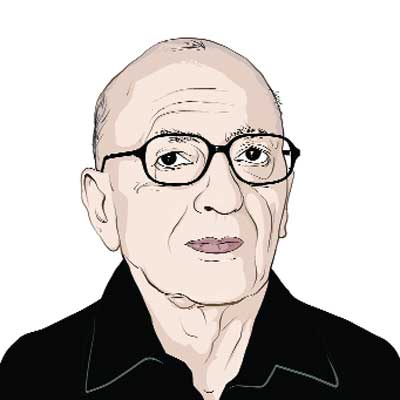Opinion Panic,pandemonium,ceasefire
As the army vacillated over Assam,the Chinese established their victory and withdrew.
As if the disgraceful disintegration of the famous 4th Division on November 18 (How the retreat turned into a rout,IE,September 19) wasnt enough,the next day it was the turn of the IV corps commander,Lieutenant-General B.M. Kaul,to panic and decide to withdraw his HQ and other troops from Tezpur to Gauhati (as it was then spelt) in the plains of Assam. This was contrary to the desultory discussion at the Tezpur airport the previous evening,when Kaul was seeing off the army chief,General P.N. Thapar,and the director of military operations,Brigadier D.K. Palit.
While Thapar listened,Palit had emphasised that even though the continuing Chinese advance made the IV Corps HQ on the northern bank of Brahmaputra vulnerable,the troops to the north of the river must put up a fight,if only to delay the Chinese. Moreover,argued Palit,the corps should go only to the south of the Brahmaputra and build up defences there with the help of a new division that was arriving there. Thapar said nothing,and Kaul kept his counsel.
What appears to have accentuated Kauls fears was a rumour on the morning of November 19 which was later disproved that just as the Chinese had outflanked Bomdila earlier,Chinese soldiers were also seen to the south of the foothills,that is,on the way to Assam plains. So he ordered not only the troops under his command but also the Border Roads Organisation (BRO) to withdraw from Tezpur. By this time he was convinced that the Chinese could paradrop enough troops at the Tezpur airport and a solitary one nearby to make the position of the Indian army totally untenable. He said so to the then Assam minister (later the republics president),Fakhruddin Ali Ahmed.
Nothing is more contagious than panic,especially the one resulting from continuous military defeat. When the army started withdrawing from Tezpur,the civil administration followed suit. For this no blame attaches to Kaul. Whatever he told the Assam minister was immaterial. The Union home ministry in Delhi had issued an order for the withdrawal of the civilian administration,and the director-general of civil defence had personally carried it to Assam.
Meanwhile,both the army and the government leadership in the nations capital were also in disarray. Kaul had neither consulted nor informed the army headquarters of his moves or his future plans. All attempts to contact him were futile. The armys top brass was divided over the defence of Assam. One view was that the army must have a plan for a firm defence of Assam rather than leave the northeastern state to the mercies of the Chinese. The rival view was that the army was in no position to do this. Collectively,however,the army leaders would take no decision either way. A complicating factor here was that General Thapar,a man of honour,had resigned and the selection of his successor,Lieutenant-General J. N. Chaudhury,was proving difficult,which is a separate story by itself.
Nor were things at the highest level of the government any better. After all,November 19 was the day when,within a span of only a few hours,Jawaharlal Nehru wrote those two panicky letters to President John F. Kennedy,asking for American military intervention by providing India with two squadrons of F-104 fighter aircraft with American crews to stem the Chinese tide,or else China would take over entire eastern India and endanger the rest of Asia. The broad content of these missives was known over the years. But their text was published for the first time last November on this page (JN to JFK: eyes only,IE,November 15,2010 and Letters from the darkest hour,IE,November 17).
On the morning of November 20,in the army ops room,Intelligence Chief B.N. Mullik demanded of DMO Palit whether the army intended to make a stand or surrender Assam. When informed that Palit had failed to obtain a decision,and that some army leaders contemplated abandoning Assam,the normally calm Mullik exploded: Never. I will speak to the prime minister. If the army wont fight,the police will… This was no empty boast. Mullik had already mobilised eight battalions of armed police to fight a guerrilla war in any areas the army might vacate. Later in the afternoon he explained his plan to Nehru,adding that he would resign as director of the Intelligence Bureau (DIB) and lead the fight. Unfortunately,this,too,is a long story that will have to be told some other time.
The evacuation of Tezpur is a tale so tragic and squalid that it would not bear retelling. Utter confusion prevailed all through November 20. To make matters worse,while North Assam formations were fleeing,the 27th Division sent from the Punjab border was trying to enter Tezpur. Since the treasury had to be emptied,some currency notes were burnt; some floated in the Brahmaputra. People were terrified. In the evening,Nehru made a broadcast to the people of Assam asking them to remain steady. In the words of his intelligence chief,the country thought this was a warning of worse disasters to come. No wonder John Kenneth Galbraiths entry,dated November 21,in his Ambassadors Journal reads: Yesterday was a day of ultimate panic in Delhi,the first time I have ever witnessed the disintegration of public morale.
Early on the morning of November 21,Home Minister Lal Bahadur Shastri,accompanied by Mullik and others,was to fly to Gauhati to help the state government overcome the indescribable chaos. Indira Gandhi was also going by a separate,private plane. At Palam,Shastri read in the newspapers of the Chinese announcement of a unilateral ceasefire effective from the midnight of November 22,and subsequent withdrawal. Hurriedly,he and his party drove to the prime ministers house where he and Mullik woke up Nehru and gave him the news. I knew this, commented the PM. How could the Chinese come any further? They had already come too far… The Chinese,now that they are at the end of their supply routes,want to get a diplomatic victory over us.
The writer is a Delhi-based political commentator





